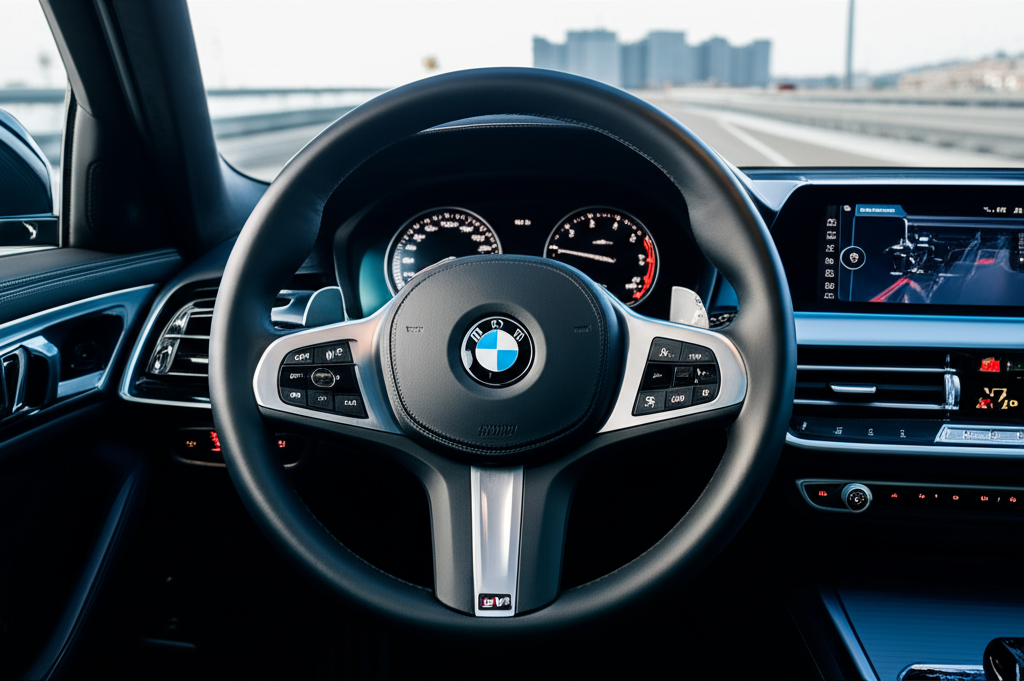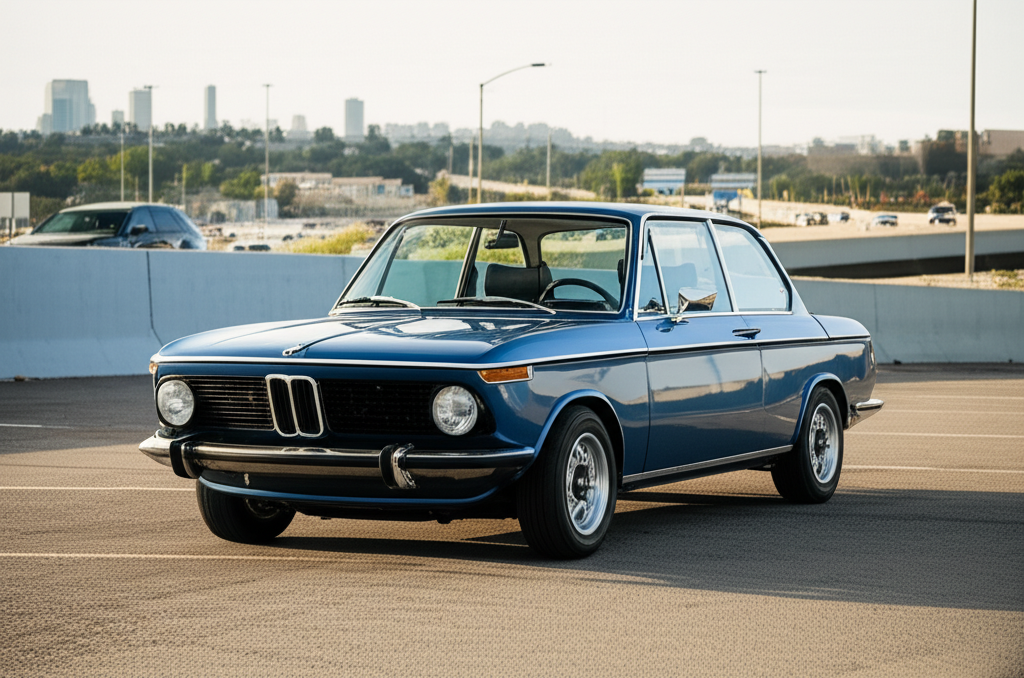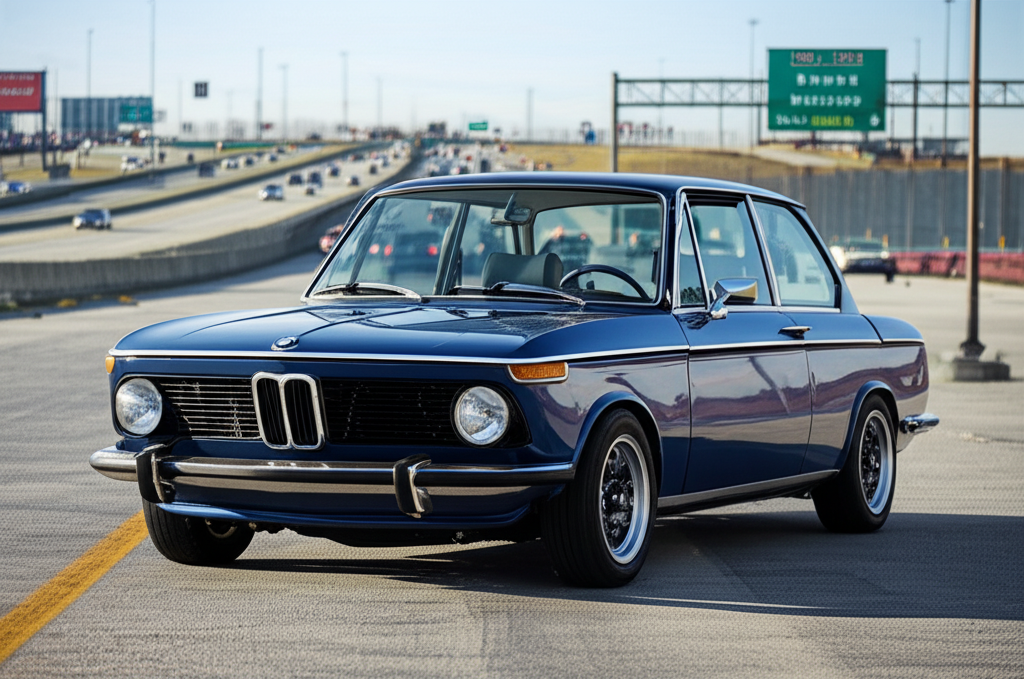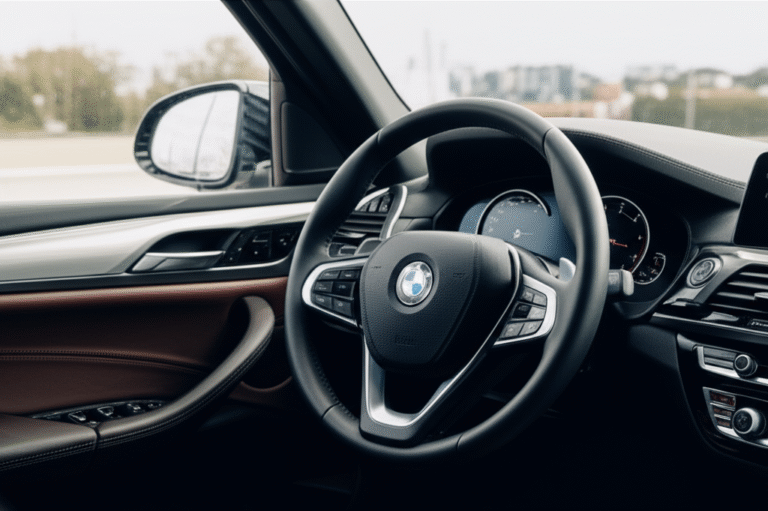Bmw 2002 Tii Turbo: 6 Must-Know Classics

The BMW 2002 Tii Turbo: 6 Stunning Classic Cars You Must Know stands as a legend, blending sportiness with practicality. This guide helps you discover its enduring appeal and related automotive icons.
Key Takeaways
- Discover the iconic BMW 2002 Tii Turbo.
- Explore six essential classic cars beyond the 2002.
- Understand their historical Automotive Significance.
- Learn what makes these classics desirable.
- Appreciate their impact on automotive engineering.
- Find inspiration for your next classic car pursuit.
Are you fascinated by automotive history and the cars that shaped driving as we know it? The BMW 2002 Tii Turbo is a name that often comes up in conversations about legendary performance sedans. It’s a car that perfectly captured the spirit of its era, offering a thrilling driving experience in a practical package. But the world of classic cars is vast and exciting, with many other models that deserve recognition. You might be wondering where to start your journey into these automotive gems. This guide is here to help. We’ll dive deep into what makes the BMW 2002 Tii Turbo so special and then expand your horizons by introducing six other stunning classic cars that every enthusiast should know. Get ready to explore the rich tapestry of automotive excellence.
Understanding the BMW 2002 Tii Turbo’s Allure

The BMW 2002 Tii Turbo is more than just a car; it’s an icon. Introduced in 1973, it was BMW’s first production turbocharged passenger car, a significant engineering feat for its time. The “Tii” designation stands for “Touring International” and indicates Kugelfischer fuel injection, which provided a significant boost in power over the standard 2002. The addition of the turbocharger pushed the performance envelope even further, creating a car that felt incredibly potent and engaging to drive.
Its compact size, rear-wheel drive, and well-balanced chassis made it a joy on winding roads. The distinctive “Recaro” seats and sporty interior appointments further cemented its status as a driver’s car. While production numbers were relatively low, its impact was immense, laying the groundwork for BMW’s future performance models and solidifying the company’s reputation for building sporty sedans. The sound of its engine, the feel of its direct steering, and the surge of power from the turbocharger all contribute to its legendary status among collectors and driving enthusiasts. It represents a golden era of automotive engineering where performance and driver engagement were paramount.
The Foundation: Why Classics Capture Our Imagination
Classic cars, like the BMW 2002 Tii Turbo, capture our imagination for a myriad of reasons. They represent a tangible connection to the past, offering a glimpse into different eras of design, technology, and culture. For many, they evoke nostalgia for a time when cars were perhaps simpler, more elemental, and fundamentally focused on the driving experience. Beyond sentimentality, these vehicles often showcase groundbreaking engineering and design that still influences modern automotive production. They are rolling pieces of art and history, appreciated for their craftsmanship and the stories they tell.
Owning or even just admiring a classic car provides a unique connection to automotive heritage. They demand a different kind of appreciation – one that values mechanical ingenuity, iconic styling, and the sheer joy of a machine that responds directly to the driver’s inputs. The sense of community surrounding classic car ownership is also a significant draw, with enthusiasts gathering at shows, rallies, and online forums to share their passion. Understanding these broader appeal factors helps us appreciate why certain models, like the BMW 2002 Tii Turbo, remain so coveted years after their production ceased.
BMW 2002 Tii Turbo: 6 Stunning Classic Cars You Must Know

While the BMW 2002 Tii Turbo is a star in its own right, exploring other classic automotive icons can deepen your appreciation for the industry’s innovators and visionaries. These six cars, each a legend in its own right, offer a diverse look at automotive excellence across different eras and manufacturers. They share a common thread of exceptional engineering, distinctive design, and a lasting impact on the automotive world.
1. Porsche 911 (Original 901/930 Generation)
The Porsche 911 is arguably one of the most iconic sports cars ever created, and its original iterations from the 1960s and 1970s are highly prized by collectors. When it debuted in 1963, it replaced the 356 and immediately set a new standard for performance and handling. Its signature rear-engine, air-cooled design was unconventional but proved remarkably effective, offering superb traction and a unique driving dynamic.
The early 911s, often referred to by their internal codes like 901 or later the more powerful 930 (Turbo), are celebrated for their raw, analog driving experience. They lack the electronic aids found in modern sports cars, meaning every input is felt directly by the driver. The distinctive silhouette, the throaty flat-six engine sound, and the legendary handling characteristics combine to create an unforgettable driving machine. Owning an early 911 is like owning a piece of automotive history, a testament to Porsche’s unwavering commitment to performance and driving pleasure. These cars are not just vehicles; they are engineering masterpieces that continue to thrill.
Key Features of Early Porsche 911s:
- Iconic Silhouette: Instantly recognizable shape that has evolved but remains true to its roots.
- Rear-Engine Layout: Unique engineering providing excellent traction and a distinct driving feel.
- Air-Cooled Engine: A hallmark of early Porsches, offering a unique mechanical symphony.
- Analog Driving Experience: Direct feedback and engagement, a purist’s dream.
- Performance Heritage: Established Porsche as a leader in sports car manufacturing.
2. Jaguar E-Type (Series 1)
Enzo Ferrari famously called the Jaguar E-Type “the most beautiful car ever made,” and it’s hard to argue with him. Introduced in 1961, the E-Type was a revolutionary blend of stunning aesthetics, exhilarating performance, and relatively affordable pricing (compared to its rivals) that captivated the world. Its aerodynamic bodywork, long hood, and sensuous curves are instantly recognizable and have cemented its place as a design icon.
Underneath its beautiful exterior, the E-Type packed a punch. Early Series 1 models featured a potent 3.8-liter (later 4.2-liter) straight-six engine that offered impressive speed, making it one of the fastest production cars of its era. The independent suspension and disc brakes (a novedad for Jaguar at the time) contributed to its remarkable handling capabilities for the period. Driving an E-Type is an experience of pure elegance and power, a true embodiment of British motoring excellence and a symbol of the swinging sixties. It represents a pinnacle of automotive design and engineering that continues to inspire awe.
Table: Jaguar E-Type Series 1 Specifications (Approximate)
| Specification | Details |
|---|---|
| Engine | 3.8-liter or 4.2-liter Straight-6 |
| Horsepower | ~265 hp (3.8L) / ~265 hp (4.2L) |
| Top Speed | ~150 mph |
| 0-60 mph | ~7.0 seconds |
| Body Styles | Coupe, Roadster, 2+2 |
3. Mercedes-Benz 300SL “Gullwing”
The Mercedes-Benz 300SL “Gullwing” is more than a car; it’s a legend forged in motorsport. Introduced in 1954, this exotic two-seater coupe was a direct descendant of Mercedes’ successful W194 racing car. Its most distinctive feature, the upward-opening doors, earned it the “Gullwing” moniker and was a necessity due to the car’s innovative, load-bearing tubular frame chassis, which prevented the use of conventional doors.
Beyond its striking looks, the 300SL was a marvel of engineering. It was the world’s first production car to feature a fuel-injected engine, a technology that offered a significant performance advantage and better fuel efficiency than carburetors. This resulted in a top speed exceeding 160 mph, making it the fastest production car of its time. The 300SL was a symbol of post-war automotive innovation and luxury, a car that blended racing pedigree with road-going refinement. Its exclusivity, advanced technology, and breathtaking design make it one of the most sought-after and valuable classic cars in the world. It embodies a period of ambitious engineering and luxurious automotive design.
The Gullwing’s Engineering Prowess:
- World’s First Fuel Injection: A groundbreaking technological leap for its era.
- Tubular Frame Chassis: Innovative construction for strength and lightness.
- Upward-Opening Doors: Iconic “Gullwing” doors, a functional design element.
- Exceptional Aerodynamics: Sleek design contributed to high top speeds.
- Motorsport Heritage: Directly from successful racing technology.
4. Ford Mustang (First Generation)
The Ford Mustang is a cornerstone of American automotive history. When it debuted at the 1964 World’s Fair, it created an entirely new class of vehicle: the “pony car.” It was designed to be sporty, stylish, and affordable, and it struck a chord with a generation of buyers, selling over a million units in its first 18 months. The Mustang offered a customizable experience, allowing buyers to choose from a range of engines, body styles (coupe, fastback, convertible), and options to make it their own.
The first-generation Mustang, produced from 1964 to 1973, evolved significantly over its run, with various performance variants like the GT and the Shelby GT350 and GT500 pushing the boundaries of muscle car performance. Even the base models, however, exuded a sporty charm and a sense of freedom. The Mustang represented the American dream on wheels – accessible, stylish, and fun. It democratized performance and style, making it a cultural phenomenon and a lasting icon of American automotive ingenuity and spirit. It’s a car that continues to represent freedom and personal expression on the open road.
Table: Ford Mustang First Generation – Key Characteristics
| Aspect | Description |
|---|---|
| Launch Year | 1964 |
| Key Body Styles | Coupe, Convertible, Fastback |
| Engine Options | Inline-6 to powerful V8s |
| Target Market | Youthful, sporty appeal |
| Legacy | Created the “Pony Car” segment |
5. Alfa Romeo Giulia Sprint GT
For those who appreciate elegant Italian design and sporty handling, the Alfa Romeo Giulia Sprint GT is a must-know classic. Produced from 1963 to 1976, this compact coupe is renowned for its beautiful Bertone-designed bodywork and its spirited performance, all wrapped in a relatively affordable and practical package. The Giulia Sprint GT captured the essence of classic Italian motoring – style, passion, and driving enjoyment.
Underneath its attractive Pininfarina-designed skin, the Giulia Sprint GT housed Alfa Romeo’s legendary twin-cam inline-four engine, known for its rev-happy nature and delightful sound. Coupled with a nimble chassis and precise steering, the car offered a driving experience that was both engaging and rewarding, particularly on twisty roads. It became a popular choice for touring and even rallying, showcasing its versatility and robust engineering. The Giulia Sprint GT represents a perfect balance of form and function, a testament to Alfa Romeo’s pedigree in creating cars that are as beautiful to look at as they are exhilarating to drive. It’s a car that exemplifies Italian flair and driving purity.
What Makes the Giulia Sprint GT Special:
- Stunning Bertone Design: Timeless Italian styling.
- Revvy Twin-Cam Engine: Lively performance and a characteristic Alfa sound.
- Nimble Handling: Excellent balance and responsive steering.
- Practicality: A sporty coupe that could be used daily.
- Affordable Classic: Accessible entry into Italian classic cars.
6. Chevrolet Corvette (C2 “Sting Ray”)
The Chevrolet Corvette C2, produced from 1963 to 1967, is widely considered one of the most stylish and significant Corvettes ever made. Nicknamed the “Sting Ray” (initially a single word), this generation introduced a radical, aggressive design inspired by the Mako shark, featuring sharp lines, a long hood, hidden headlights, and a distinctive split-rear window on early coupes. It was a dramatic departure from its predecessor and catapulted the Corvette into the realm of exotic sports cars.
Beyond its breathtaking aesthetics, the C2 Sting Ray offered serious performance. Available with a range of powerful V8 engines, including the legendary big-block 427ci in later models, it provided exhilarating acceleration and speed. The independent rear suspension, introduced in this generation, significantly improved handling and ride quality. The C2 Sting Ray is a pure American sports car icon, representing a bold leap forward in design and performance for Chevrolet. It remains a highly desirable classic, celebrated for its aggressive styling, potent powertrains, and its place in American automotive legend. It embodies the spirit of American muscle and sports car ambition.
Pro Tip: When considering any classic car, especially performance models like the Corvette C2 or BMW 2002 Tii Turbo, always factor in potential maintenance and restoration costs. Parts availability and specialized mechanic knowledge are crucial.
Comparing Classic Car Values and Appeal
The appeal and value of classic cars are influenced by a complex interplay of factors including rarity, condition, historical significance, engineering innovation, and desirability. The BMW 2002 Tii Turbo, for instance, holds its value due to its rarity (especially the turbo models), its importance as BMW’s first turbo production car, and its reputation for fun, accessible performance that predates many modern hot hatches. Its compact size and practical four-door option make it more versatile than some two-seater sports cars.
In comparison, the Porsche 911, particularly early air-cooled models, commands high prices due to its enduring design, legendary performance, and its status as a continually evolving icon. The Jaguar E-Type Series 1 is a design masterpiece, and its beauty alone drives significant value, complemented by its performance for its time. The Mercedes-Benz 300SL Gullwing sits at the pinnacle of collector car values due to its extreme rarity, groundbreaking technology, and association with luxury and motorsport heritage. The Ford Mustang, while produced in vast numbers, has strong value in its early, iconic first-generation models, especially performance-oriented variants, due to its cultural impact and broad appeal. The Alfa Romeo Giulia Sprint GT offers incredible value for its beauty, engineering, and driving pleasure, often being a more accessible entry point into classic Italian motoring. The Chevrolet Corvette C2 Sting Ray is highly valued for its stunning, aggressive design and potent V8 performance, representing a high point in American sports car design.
Table: Factors Influencing Classic Car Value & Appeal
| Factor | Impact on Value & Appeal | Example |
|---|---|---|
| Rarity | Increases desirability and price. | BMW 2002 Tii Turbo, Mercedes 300SL Gullwing |
| Condition & Originality | Pristine, original examples are most valuable. | Well-maintained Porsche 911s, unrestored E-Types |
| Historical Significance | Cars that broke new ground or defined an era. | Mercedes 300SL (fuel injection), Mustang (pony car segment) |
| Design & Aesthetics | Timeless beauty commands and retains value. | Jaguar E-Type, Corvette C2 Sting Ray |
| Performance & Driving Experience | Engaging and powerful cars are highly sought after. | Porsche 911, BMW 2002 Tii Turbo |
| Brand Prestige | Reputation for quality and performance. | Porsche, Mercedes-Benz, Jaguar |
Maintaining Your Classic Car Dream
Owning a classic car is a rewarding experience, but it requires dedication to maintenance. Unlike modern vehicles, older cars often need more frequent attention and specialized care. Understanding basic maintenance is crucial for any owner, whether you have a BMW 2002 Tii Turbo, a Mustang, or an E-Type. Regular checks of fluids, tire pressure, brakes, and electrical systems are essential.
Many classic car owners find joy in the hands-on aspect of maintenance. It’s an opportunity to connect with the machine on a deeper level. For more complex tasks, finding a reputable mechanic who specializes in classic cars is vital. Resources like the U.S. Department of Transportation’s National Highway Traffic Safety Administration (NHTSA) offer general advice on vehicle safety that can be applied even to older vehicles. For specific model advice, consulting owner’s manuals, online forums, and marque-specific clubs is invaluable. These communities are treasure troves of knowledge, offering advice on everything from sourcing parts to tackling common restoration challenges.
Essential Classic Car Maintenance Checklist:
- Fluid Levels: Regularly check oil, coolant, brake fluid, and transmission fluid.
- Tire Pressure & Condition: Ensure tires are properly inflated and free from cracks.
- Brake System Inspection: Check pads/shoes, rotors/drums, and fluid lines.
- Electrical System: Inspect battery, wiring, and all lights/accessories.
- Belts & Hoses: Look for cracks, wear, and proper tension.
- Cooling System: Check radiator, fan, and coolant for leaks or blockages.
- Lubrication: Ensure all grease points are serviced as per manual.
Frequently Asked Questions (FAQs)
Q1: Is the BMW 2002 Tii Turbo a good car for beginners in the classic car world?
The BMW 2002 Tii Turbo is an exceptional car, but its rarity and specific mechanicals can make it a challenging first classic. Models like the standard 2002 or 1502 are more common and often easier to maintain for a beginner. However, for an enthusiast focused on this specific model, understanding its needs from the start is key. Researching parts availability and finding a specialist mechanic for the Tii Turbo is highly recommended before purchase.
Q2: What are common issues with classic cars like the ones mentioned?
Common issues include rust, aging rubber and plastic components (hoses, seals, bushings), electrical gremlins due to older wiring, carburetor or fuel injection problems, and wear and tear on mechanical parts like engines and transmissions. Regular preventative maintenance and prompt attention to any developing problems are crucial for all classic cars.
Q3: How much should I expect to spend on maintaining a classic car annually?
This varies greatly depending on the car, its condition, how much you drive it, and what you do yourself. A well-maintained, rare classic might require less immediate repair but could have expensive specialized parts. An older, less rare car might need more frequent attention. Budgeting at least 10-20% of the car’s value annually for maintenance and repairs is a good starting point, but be prepared for unexpected costs.
Q4: Where can I find spare parts for classic BMWs or other European models?
Specialized parts suppliers, marque-specific clubs (like BMW CCA or Porsche Club of America), online forums, and enthusiast marketplaces are excellent resources. For rarer parts, restoration specialists and even international suppliers might be necessary. Websites like BMW Car Club of America are great places to start for information and parts sourcing.
Q5: Are classic cars like the Mustang and Corvette good investments?
While many classic cars appreciate in value, they should primarily be purchased for enjoyment. Appreciation is not guaranteed and depends heavily on factors like rarity, condition, desirability, and market trends. Treating a classic car as an investment means meticulous care, proper documentation, and understanding the market. A well-maintained, historically significant classic can indeed be a good long-term investment, but the passion for driving and owning it should come first.
Q6: What is the significance of fuel injection in classic performance cars?
Fuel injection systems, like the Kugelfischer system in the BMW 2002 Tii Turbo, replaced carburetors to deliver fuel more precisely to the engine. This generally leads to improved performance, better fuel efficiency, easier cold starts, and more consistent operation under varying conditions compared to older carburetor technology. It was a significant advancement in automotive engineering.
Conclusion
The BMW 2002 Tii Turbo remains an undisputed champion in the pantheon of classic performance sedans, celebrated for its blend of agility, power, and practicality. Its legacy is a testament to BMW’s engineering prowess and its role in shaping the modern enthusiast car. However, the automotive landscape is rich with other iconic machines that have left indelible marks on history. From the timeless elegance of the Jaguar E-Type and the groundbreaking innovation of the Mercedes 300SL Gullwing, to the pure driving dynamics of the early Porsche 911, the accessible style of the Ford Mustang, the Italian flair of the Alfa Romeo Giulia Sprint GT, and the aggressive American spirit of the Corvette C2 Sting Ray – each of these six classics offers a unique window into automotive excellence.
Exploring these vehicles not only broadens your appreciation for automotive history but also highlights the diverse paths taken by manufacturers to achieve performance, style, and driver engagement. Whether you’re a seasoned collector or just beginning your journey into the world of classic cars, understanding these legends provides a deeper context for the vehicles we admire today. Each car tells a story of innovation, design, and the enduring passion for driving. Drive smart, drive safe, and keep the automotive flame alive.


